In the culinary world, where innovation and convenience collide, the question of whether non-stick pans can gracefully waltz their way into the scorching embrace of the oven is nothing short of a gastronomic tango.
As we embark on this sizzling journey of kitchen exploration, the intersection of technology and tradition unveils itself, challenging the very boundaries of cookware versatility. Can these slick kitchen companions withstand the inferno within the oven’s domain, or are we left tiptoeing on the precipice of culinary calamity?
Let’s dive into the delightful dance of non-stick pans in the oven, where heat-resistant prowess meets the artistry of baking brilliance.
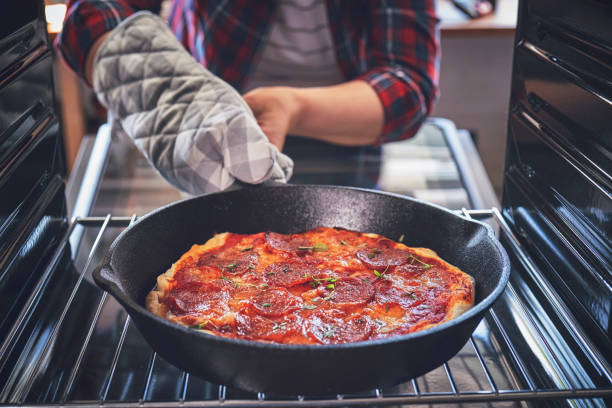
Can Non Stick Pans Go In The Oven
Yes, non-stick pans can generally go in the oven, but it depends on the specific pan and its manufacturer’s guidelines.
Navigating the Oven-Safe Terrain: A Closer Look at Non-Stick Pans
Ever wondered if your trusty non-stick pan can handle the heat of the oven? The answer, in most cases, is a reassuring yes. Non-stick pans are designed to withstand a range of temperatures, but there are nuances to consider.
Understanding Non-Stick Coatings
Non-stick pans are coated with materials like PTFE (polytetrafluoroethylene) or ceramic. The PTFE coating, commonly known as Teflon, is generally safe for oven use up to a certain temperature, often around 500°F (260°C).
On the other hand, ceramic-coated pans are known for being more versatile, often being oven-safe at higher temperatures.
Check the Manufacturer’s Guidelines
The key to safely using non-stick pans in the oven lies in checking the manufacturer’s guidelines. Each pan may have specific recommendations, including temperature limits and other usage instructions. Ignoring these guidelines could compromise the non-stick coating and its overall performance.
Avoiding High Heat and Broiling
While non-stick pans can handle moderate oven temperatures, it’s crucial to avoid exposing them to excessively high heat or using them for broiling. Extreme temperatures may lead to the breakdown of the non-stick coating, affecting its effectiveness and potentially releasing harmful fumes.
Understanding Non-Stick Coatings
Types of Non-Stick Coatings
1. PTFE (Polytetrafluoroethylene) Coating
Polytetrafluoroethylene, commonly known as PTFE, is a widely used non-stick coating in kitchenware. This synthetic fluoropolymer exhibits exceptional non-stick properties, making it popular for cookware such as frying pans and baking sheets.
PTFE is recognized for its resistance to high temperatures and chemical inertness, ensuring a smooth release of food without sticking. However, it’s crucial to follow PTFE safety guidelines to prevent overheating and potential release of harmful fumes.
2. Ceramic Coating
Ceramic non-stick coatings are composed of inorganic materials like silicon and oxygen. These coatings are celebrated for being PFOA and PTFE-free, addressing concerns about potential health risks.
Ceramic-coated cookware provides a non-stick surface that is scratch-resistant and can withstand moderate to high temperatures. When considering ceramic coatings, it’s essential to be mindful of specific temperature limits to ensure the longevity of the non-stick properties.
3. Other Coatings and Materials
In addition to PTFE and ceramic coatings, there are alternative non-stick coatings and materials available in the market. Some may use a combination of materials to enhance durability or incorporate unique features.
It’s important to explore these options and understand the specific properties of each coating to choose the one that best suits your cooking needs.
Temperature Limits for Non-Stick Coatings
1. PTFE Safety Guidelines
PTFE coatings are renowned for their ability to resist high temperatures, but exceeding recommended limits can lead to degradation and the potential release of harmful substances. To ensure safety, avoid using PTFE-coated cookware at temperatures above 500°F (260°C).
Overheating can cause the breakdown of PTFE, compromising its non-stick properties and releasing fumes that may pose health risks.
2. Ceramic Coating Considerations
While ceramic coatings are generally more heat-resistant than PTFE, it’s crucial to adhere to recommended temperature guidelines. Exposing ceramic-coated pans to excessively high temperatures can impact the coating’s performance and durability.
To maximize the lifespan of your ceramic non-stick cookware, avoid cooking at temperatures exceeding the manufacturer’s recommendations and use low to medium heat settings when possible.
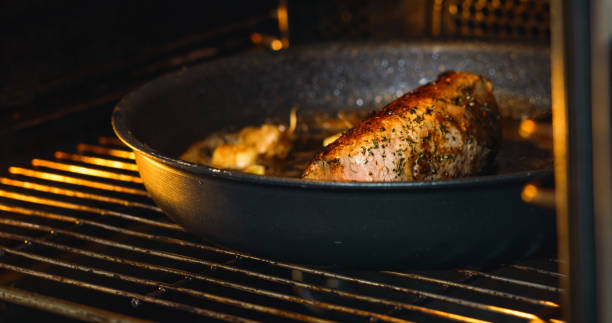
Oven Safety Guidelines
General Oven Safety Tips
1. Proper Ventilation
Ensure proper ventilation in the kitchen when using the oven. Adequate airflow helps prevent the accumulation of gas or fumes and maintains a safe cooking environment.
2. Regular Maintenance
Schedule regular maintenance checks for your oven. Ensure that seals, knobs, and heating elements are in good condition to avoid potential hazards and ensure optimal performance.
3. Clearing Clutter
Keep the oven area clear of combustible materials, such as kitchen towels or paper, to minimize the risk of accidental fires. Maintain a clutter-free cooking space for safer operation.
4. Child Safety Measures
Implement child safety measures, such as using oven locks and educating children about the dangers of hot surfaces. This reduces the risk of accidental burns and injuries.
5. Monitoring Cooking
Never leave the oven unattended while in use. Regularly check the progress of your cooking to prevent overcooking, burning, or potential safety hazards.
Temperature Limits for Common Cooking Methods
1. Baking
Set the oven temperature according to the recipe guidelines for baking. Typically, temperatures range between 325°F to 450°F (163°C to 232°C) for various baked goods. Follow recommended settings to achieve optimal results and ensure safety.
2. Roasting
When roasting meats or vegetables, temperatures between 350°F to 450°F (177°C to 232°C) are common. Adjust the temperature based on the specific requirements of the recipe to achieve the desired doneness and flavor.
3. Broiling
Broiling involves using high temperatures, often ranging from 500°F to 550°F (260°C to 288°C). It’s crucial to follow recommended broiling times and distances from the heat source to prevent overcooking and ensure food safety.
Impact of Temperature on Non-Stick Coatings
1. Non-Stick Coating Integrity
High temperatures in the oven can impact the integrity of non-stick coatings, especially in cookware with PTFE or ceramic coatings. It’s essential to stay within the specified temperature limits provided by the manufacturer to prevent degradation and potential health risks.
2. Avoiding Overheating
Excessive temperatures may compromise the non-stick properties of coated pans. To safeguard non-stick coatings, avoid subjecting them to temperatures beyond their recommended limits. This ensures the longevity of the coating and maintains its effectiveness.
Oven Compatibility of Non-Stick Pans
PTFE-Coated Pans
1. Maximum Temperature Limits
PTFE-coated pans, commonly known as Teflon pans, can generally go in the oven, but it’s crucial to be mindful of their maximum temperature limits. Most PTFE coatings have a threshold of around 500°F (260°C).
Exceeding this temperature can lead to the breakdown of the PTFE, affecting the non-stick properties and potentially releasing harmful fumes.
2. Duration of Oven Exposure
While PTFE-coated pans can handle oven use, it’s essential to consider the duration of exposure. Prolonged exposure to high temperatures, even within the recommended limits, can impact the longevity of the non-stick coating. Aim for reasonable oven durations to preserve the integrity of the PTFE.
3. Risks Associated with Exceeding Limits
Exceeding the recommended temperature limits for PTFE-coated pans poses risks such as the release of toxic fumes, including perfluorooctanoic acid (PFOA). These fumes can be harmful to both the cookware and individuals in the vicinity. Adhering to the specified limits ensures safe and effective use of PTFE-coated pans in the oven.
Ceramic-Coated Pans
1. Temperature Resistance
Ceramic-coated pans are generally more resilient to high temperatures compared to PTFE-coated ones. They can often withstand oven temperatures up to 450°F to 500°F (232°C to 260°C), making them suitable for various cooking methods that involve oven use.
2. Guidelines for Safe Oven Use
When using ceramic-coated pans in the oven, it’s crucial to follow the manufacturer’s guidelines for safe oven use. While they offer better temperature resistance than PTFE, prolonged exposure to extreme heat can still affect the coating.
Adhering to recommended temperature limits and avoiding excessive heat exposure ensures the durability and effectiveness of ceramic-coated pans.
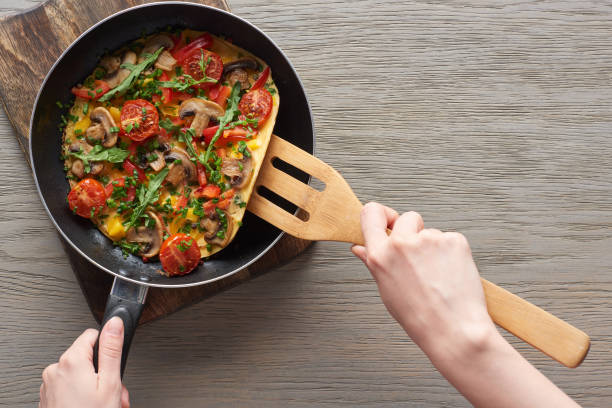
Advantages of Using Non-Stick Pans in the Oven
Versatility in Cooking Methods
1. Even Heat Distribution
Non-stick pans, whether coated with PTFE or ceramic, offer even heat distribution. This characteristic is advantageous when using the oven for baking, roasting, or broiling, as it ensures uniform cooking and consistent results.
2. Broiling and Grilling
Non-stick pans with high-temperature resistance are versatile for broiling and grilling in the oven. They allow for the creation of delicious, evenly cooked dishes with a desirable sear on the outside.
3. Baking without Sticking
When baking in the oven, non-stick pans eliminate the need for excessive greasing or parchment paper. The non-stick surface ensures easy release, promoting hassle-free baking and effortless removal of baked goods.
Convenience for One-Dish Meals
1. Easy Cleanup
Non-stick pans simplify the cleanup process for one-dish meals cooked in the oven. The non-stick coating reduces the likelihood of food residues sticking to the pan, making it easier to wash and maintain.
2. Versatile Oven-to-Table Use
Non-stick pans are often aesthetically pleasing and suitable for oven-to-table serving. This versatility adds convenience, allowing for a seamless transition from cooking to serving without the need for transferring food to separate dishes.
3. Reduced Cooking Time
The non-stick surface facilitates faster and more efficient cooking in the oven. This can be particularly advantageous for one-dish meals where various ingredients are cooked together, saving both time and energy.
Benefits for Specific Recipes
1. Delicate Recipes
Non-stick pans are ideal for delicate recipes that require precise temperature control in the oven. The non-stick surface minimizes the risk of overcooking or sticking, preserving the integrity of delicate ingredients.
2. Egg-Based Dishes
Non-stick pans are a go-to choice for oven-baked egg dishes, such as frittatas or quiches. The non-stick surface ensures that these dishes release easily from the pan, maintaining their shape and presentation.
3. Low-Fat Cooking
Non-stick pans enable low-fat cooking in the oven. With minimal or no added oils or fats, non-stick surfaces allow for healthier meal preparation without compromising on flavor or texture.
Precautions and Best Practices
Avoiding Sudden Temperature Changes
1. Gradual Temperature Changes
To prevent damage to non-stick coatings, particularly those made with PTFE or ceramic, avoid subjecting pans to sudden temperature changes. Allow them to cool gradually after use, rather than placing them directly from the oven to a cold surface or immersing them in cold water.
2. Room Temperature Transition
When transitioning non-stick pans from the oven to the countertop, place them on room temperature surfaces. Sudden changes in temperature can lead to thermal shock, affecting the integrity of the coating and potentially reducing its non-stick effectiveness.
3. Preheating Considerations
When preheating non-stick pans in the oven, follow the manufacturer’s guidelines for recommended preheating times. This ensures that the pan gradually reaches the desired temperature, minimizing stress on the coating.
Using Appropriate Utensils
1. Non-Abrasive Utensils
Opt for non-abrasive utensils, such as silicone or wooden spatulas and spoons, when cooking with non-stick pans. Avoid using metal utensils, as they can scratch and damage the non-stick coating, compromising its effectiveness.
2. Nylon or Plastic Tools
Nylon or plastic utensils are gentle on non-stick surfaces and help preserve the coating. When flipping, stirring, or serving food in non-stick pans, choose utensils specifically designed for non-stick cookware to maintain the longevity of the coating.
3. Avoiding Sharp Objects
Refrain from using sharp objects or cutting directly in the pan, as this can scratch and damage the non-stick coating. Cutting on separate surfaces prevents potential abrasions and ensures the durability of the non-stick surface.
Cleaning and Maintenance Tips
1. Hand Washing Preferred
Non-stick pans are best cleaned by hand rather than in a dishwasher. Use a mild dish soap, warm water, and a soft sponge or cloth to gently clean the pan. Avoid abrasive scouring pads or harsh cleaning chemicals that can erode the coating.
2. Prompt Cleaning
Clean non-stick pans promptly after use to prevent food residues from hardening. The quicker the cleaning process, the easier it is to maintain the non-stick surface and prevent the need for aggressive scrubbing.
3. Avoiding High Water Pressure
When cleaning non-stick pans, avoid using high-pressure water jets, as these can be harsh on the coating. Gentle rinsing under a normal faucet stream is sufficient for effective cleaning without compromising the non-stick properties.
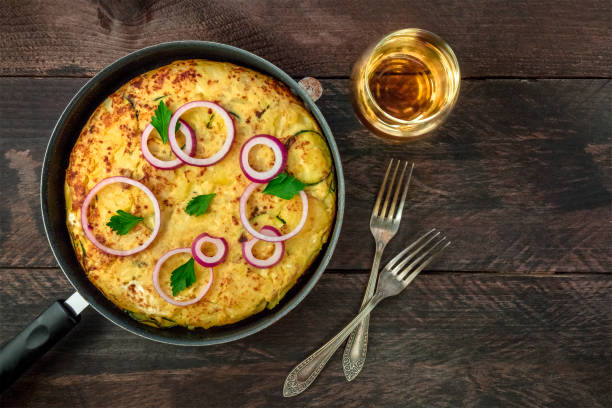
Common Myths Debunked
Myth: Non-Stick Pans Release Toxic Fumes in the Oven
Debunking the Myth
The idea that non-stick pans, particularly those with PTFE coatings like Teflon, release toxic fumes in the oven has been widely misinterpreted. While it’s true that PTFE can emit fumes when subjected to extremely high temperatures (above 500°F or 260°C), this typically occurs under conditions that far exceed normal cooking temperatures.
Following recommended temperature guidelines and avoiding overheating ensures that non-stick pans are safe for use in the oven without releasing harmful fumes.
Fact
When used within their specified temperature limits, non-stick pans are safe and do not emit toxic fumes during regular cooking or baking in the oven. It’s essential to follow the manufacturer’s guidelines to ensure safe and proper usage.
B. Myth: High Oven Temperatures Always Damage Non-Stick Coatings
Debunking the Myth
The belief that high oven temperatures always lead to the damage of non-stick coatings is a misconception. Non-stick pans, whether coated with PTFE or ceramic, are designed to withstand specific temperature ranges.
While extreme temperatures can compromise the integrity of the coating over time, cooking within the recommended limits and following proper care guidelines helps maintain the non-stick properties without causing damage.
Fact
Non-stick pans are engineered to handle high temperatures within specified limits. Adhering to these limits and employing appropriate cooking practices ensures the longevity of the non-stick coating without compromising its effectiveness.
C. Separating Fact from Fiction Regarding Non-Stick Pan Safety
Debunking the Myth
There are various misconceptions surrounding the safety of non-stick pans, including concerns about chemicals leaching into food. In reality, when used according to manufacturer guidelines, non-stick pans are considered safe for cooking. PTFE and ceramic coatings are inert and stable at normal cooking temperatures, posing no health risks.
Fact
Non-stick pans are safe when used as directed. Following proper care, avoiding extreme temperatures, and using appropriate utensils help maintain the integrity of the coating and ensure a safe cooking experience.
It’s essential to separate unfounded fears from scientifically supported facts when considering the safety of non-stick cookware.
Alternatives for High-Heat Cooking
Cast Iron Pans
1. Superior Heat Retention
Cast iron pans excel in retaining and evenly distributing heat, making them an excellent choice for high-heat cooking. They can withstand intense temperatures, making them suitable for searing, frying, and baking in the oven.
2. Versatility
Cast iron pans are highly versatile and can transition seamlessly from stovetop to oven. They are ideal for recipes that require a combination of cooking methods, ensuring consistent heat throughout the cooking process.
3. Natural Non-Stick Properties
With proper seasoning and care, cast iron pans develop a natural non-stick surface over time. This makes them a durable and low-maintenance alternative for high-heat cooking without the need for synthetic coatings.
Stainless Steel Pans
1. Durability and Resistance
Stainless steel pans are known for their durability and resistance to high temperatures. They can handle intense heat without warping, making them suitable for searing, browning, and oven cooking.
2. Even Heat Distribution
Stainless steel pans provide even heat distribution, allowing for precise temperature control. This feature makes them well-suited for high-heat cooking methods, such as roasting and broiling in the oven.
3. Versatility and Compatibility
Stainless steel pans are versatile and compatible with various cooktops, including induction. Their oven-safe design enhances their usability for a wide range of cooking techniques.
Other Oven-Safe Cookware Options
1. Anodized Aluminum Pans
Anodized aluminum pans have a hardened surface that can withstand high temperatures and resist scratching. They are suitable for oven use and offer a lightweight alternative for high-heat cooking.
2. Oven-Safe Glass Bakeware
Glass bakeware is oven-safe and ideal for dishes that require slow, even cooking. It’s an excellent option for casseroles, roasts, and baking, allowing for easy monitoring of the cooking process.
3. Copper Cookware
Copper pans, often lined with stainless steel, provide exceptional heat conductivity. They are suitable for high-heat cooking and can be used in the oven for tasks like roasting and baking.
4. Carbon Steel Pans
Similar to cast iron, carbon steel pans are known for their durability and ability to handle high temperatures. They are well-suited for searing, frying, and baking, offering a lightweight alternative to cast iron.
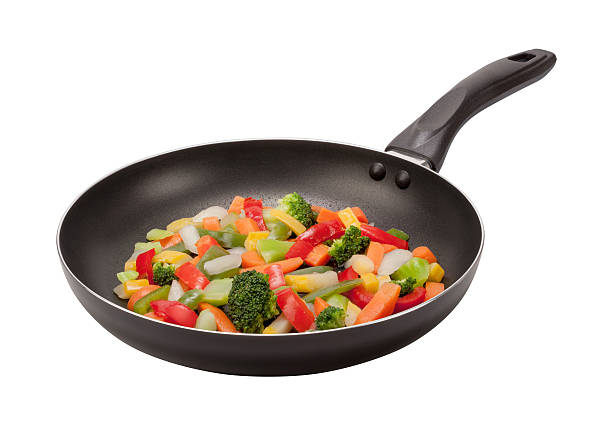
FAQs
Can I use my non-stick pan in the oven?
Absolutely! Most non-stick pans are oven-safe up to a certain temperature, usually around 400°F (200°C). Check the manufacturer’s guidelines to ensure safe usage and maintain the pan’s longevity.
Is it safe to put my non-stick pan in the oven for broiling?
Yes, many non-stick pans can handle broiling temperatures. However, it’s crucial to verify the specific temperature limits provided by the manufacturer to avoid any potential damage.
What are the advantages of using a non-stick pan in the oven?
Non-stick pans offer convenient versatility. You can seamlessly transition from stovetop cooking to oven baking, making them a practical choice for dishes that require both cooking methods.
Can I use my non-stick pan for baking dishes like casseroles and frittatas?
Certainly! Non-stick pans are excellent for baking, making them ideal for preparing a variety of dishes, from savory casseroles to delightful frittatas. Just ensure the oven temperature doesn’t exceed the pan’s recommended limit.
How can I maintain my non-stick pan’s oven-safety over time?
To preserve your non-stick pan’s oven-safety, avoid exposing it to temperatures beyond the recommended limit. Additionally, gentle hand washing and using utensils that won’t scratch the non-stick coating will contribute to its long-lasting performance.
Can I use my non-stick pan for recipes that require high-temperature cooking in the oven?
While non-stick pans are generally safe for moderate oven temperatures, it’s advisable to avoid extreme heat settings. Opt for other cookware if your recipe calls for very high temperatures, as exceeding the pan’s limit may compromise its non-stick properties.
Are there any specific non-stick pans designed exclusively for oven use?
Yes, some manufacturers offer non-stick pans explicitly designed for oven use. These pans often come with enhanced heat resistance, making them suitable for a broader range of oven temperatures. Check product labels and specifications for details.
Can I use my non-stick pan for baking desserts like cakes and cookies?
Absolutely! Non-stick pans are fantastic for baking sweet treats like cakes and cookies. Their non-stick surface ensures easy release, making it a joy to create delicious desserts without worrying about sticking.
Is there a maximum time limit for leaving a non-stick pan in the oven?
While non-stick pans are oven-safe, it’s wise to adhere to reasonable cooking durations. Prolonged exposure to high temperatures may affect the pan’s performance over time. Always refer to the manufacturer’s guidelines for specific time and temperature recommendations.
Can I use my non-stick pan for making homemade pizzas in the oven?
Absolutely! Non-stick pans are great for baking homemade pizzas. Their even heat distribution and non-stick properties ensure that your pizza crust cooks to perfection without sticking to the pan. Enjoy your homemade pizza creations hassle-free!
Conclusion
In conclusion, the versatility of non-stick pans extends beyond stovetop cooking, as they can indeed be used in the oven under certain conditions.
While many non-stick pans are oven-safe up to a specific temperature, it is crucial to check the manufacturer’s guidelines and recommendations to prevent any potential damage to the pan or compromising its non-stick coating.
By adhering to these guidelines, users can confidently utilize non-stick pans for a wider range of cooking methods, seamlessly transitioning from stovetop to oven and enjoying the convenience and efficiency that these versatile kitchen tools offer.